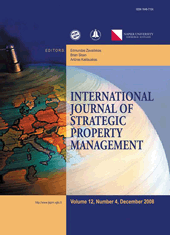Interpreting Resourcing Bottlenecks of Post-Wenchuan Earthquake Reconstruction in China
Interpreting Resourcing Bottlenecks of Post-Wenchuan Earthquake Reconstruction in China18
Author(s): Erica Seville, Regan Potangaroa, Suzanne Wilkinson, Yan ChangSubject(s): Economy
Published by: Vilnius Gediminas Technical University
Keywords: Post-disaster reconstruction; Resource availability; Resourcing constraints; Wenchuan earthquake; China
Summary/Abstract: Post-disaster reconstruction is likely to suffer resource shortages and supply disruptions. The devastating Wenchuan earthquake on 12 May 2008 in China served as a typical example. After the catastrophe, resource problems such as price escalation and market inflation posed a significant challenge to Chinese policy makers and reconstruction team. Based on field surveys, the study attempts to examine the Wenchuan earthquake reconstruction practice and identify the most vulnerable resources along with their resourcing impediments inherent in the reconstruction process. The research findings show that at the early stage of reconstruction, labour and materials such as brick, cement, steel and aggregate were the most needed yet vulnerable resources. Procurement of these resources was mainly hindered by (1) reconstruction schedule and speed, (2) the impacts of the 2008 global financial crisis, (3) inadequate local transportation capacity, (4) dysfunction of the construction market, and (5) insufficient engagement of local construction industry. While the interventions and measures Chinese government adopted after the earthquake seem to be able to deal with resourcing bottlenecks in a short time; different efforts to reduce the impacts of these five areas are needed with a view to expediting longer-term disaster recovery and reconstruction.
Journal: International Journal of Strategic Property Management
- Issue Year: 14/2010
- Issue No: 4
- Page Range: 314-331
- Page Count: 18
- Language: English

